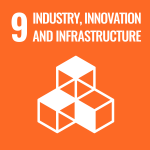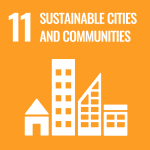Reconstructing concrete
Concrete is the most used material in the world after water. It is used for building our infrastructure, like bridges, tunnels, dams and roads as well as our homes offices and driveways. Like any other structure, regular maintenance is required for upkeep. Yet, where superficial cracks can be fixed, once the surface is too damaged the long-term solution is demolition.
In Europe alone, more than 300 million tons of concrete demolition waste are generated every year and most of it remains unused in landfills. To avoid this waste ending up in landfills, the construction industry has been recycling demolished concrete for years. But there are limitations due to the quality of the concrete demolition waste. As the concrete production is responsible for 8% of the global CO2 emissions there need to be ways of making the concrete production more sustainable.
Sika has found a way. The chemical company developed a process to separate and reuse raw materials of demolished concrete and increase the quality of the recycled material. The old concrete is broken down into individual parts – aggregates, sand, and fine powdered material – in a simple process which also binds CO₂ per ton of crushed concrete demolition waste. With this process, larger amounts of concrete demolition waste can be used for the production of high-quality concrete and all of the concrete demolition waste can be reused without any waste. Furthermore, CO2 can be sequestrated in this process and a fine powder is generated that can be used as a filler in the concrete or cement production.
Comparative testing has demonstrated that new concrete containing recycled content performs similarly to an all-new product. Thanks to chemical additives, other process optimisations can be achieved, such as the flexibility to tailor specific concrete functionalities. With special efficiency improving admixture the energy required to separate the cement stone from the aggregates can also be reduced.
An industrial scale pilot plant is in place for one year to find out whether the concept works on a large scale. This innovation will make a significant contribution reducing the ecological footprint of the construction industry in terms of conserving resources, reducing waste, and CO2 emissions.
Associated SDG targets



